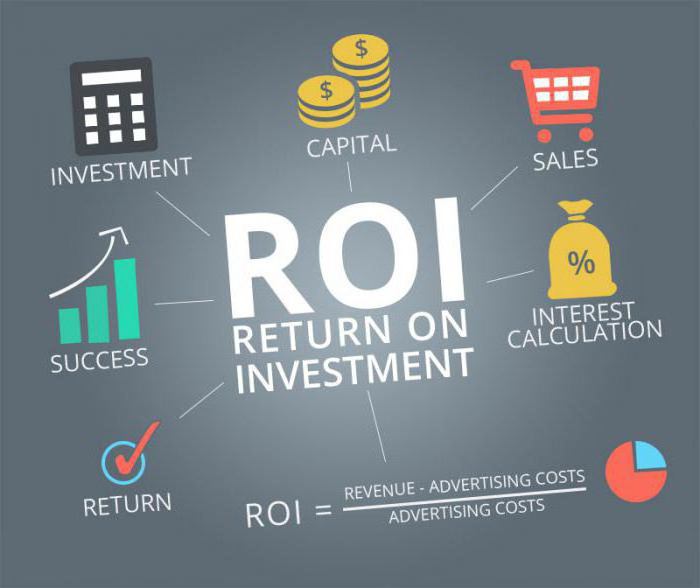Entrepreneur's decisions depend not only on economic goals (such as maximizing income and minimizing costs), but also on many other subjective motives and criteria, such as personal interests, future expectations, risk appetite, etc.
Investment market
Investment market - this is the relationship between the subjects of investment activity, which form the supply and demand. The stock market is similar in instrumentation to the investment market, since the main instruments represented in both markets are securities.

The investment market performs a number of functions. The following are considered to be the main ones:
- Search for optimal directions for investing capital.
- Reducing the risks of financial investment.
- Distribution of capital.
- Setting prices for investment instruments.
- Increase in working capital
- Attracting business investment.
Separately, it should highlight the risks when investing in securities. Financial risks associated with investments can be divided into two broad categories: systematic and unsystematic.
Systematic risk is determined by market reasons. Examples of factors that increase the systematic risk of financial investments are changes in the legislative framework, macroeconomic situation, inflation, etc.

Unsystematic risk is associated with stocks or securities. As an example, we can cite the risks that arise when the wrong choice of securities as an object of investment activity; temporary risk; liquidity risk that arises from the complication of the sale of securities at a bargain price.
Types of investments
Investments can be of two types depending on the term of investments: short-term and long-term. The first involves an investment of up to three years, the second - more than three years.
Construction investments are now gaining popularity as a form of short-term investment. Similar investments by investment object can be divided into several groups:
- Residential buildings.
- Commercial real estate (for example, offices, entertainment complexes).
- Hotels
- Enterprises.

All directions have their advantages and disadvantages. When choosing the type of investment in construction, the investor weighs all the pros and cons and makes a calculation of the effectiveness of investments.
A long-term investment strategy is one of the elements for achieving investment objectives. Part of this strategy is to calculate the cost-effectiveness of investments.
Investment Performance Criteria
The economic evaluation of investments requires specific selection criteria. They cannot be exceptions for evaluating possible alternatives. Financial mathematics cannot replace decisions, but it can become an auxiliary tool for decision making.

The selection criteria for evaluating the effectiveness of investments must fulfill the following requirements:
- All payments and other costs that arise in connection with the investment must be accounted for.
- The level and timing of receipts and payments should influence the decision.
- Decision rules should be logical and clear.
Current value
All methods are based on the principle of determining true value.

When applying the fair value method, the time moment T0 is taken as the basis so that all payments occur at time T0 (or in period t0) or later. It follows that all payments must be discounted at time T0, if they do not occur in the period t0.Only in this way is the present value calculated, which is the current value or the net present value of a number of payments.
Interpretation of fair value
The value of the fair value parameter used for the economic valuation of investments can be interpreted in three ways. If the current value of the investment is positive, this means that the invested capital through the investment is fully returned, the investor receives (at least) the return on investment at the level of calculation interest and the current excess in the amount of the current value. An investment is effective in its profitability in contrast to the alternative use of capital.

If the current value is zero, this means that through investment, the involved capital is rented at the level of calculation interest, that is, the invested capital is fully returned with an increase at the level of calculation interest. An investment is effective because it brings as much as the alternative use of capital.
If the current value is negative, then the investment does not make sense, and capital can be used more productively. Negative fair value can mean not only low profitability, but also a loss of capital.
The value of the parameter "current value"
Using the fair value method, you can check whether we get the invested capital with an increase at the level of calculation interest. The current value under certain conditions may serve as a criterion for choosing an alternative from a variety of investment projects.

The conditions are that all investment alternatives accept the same calculation percentage, and the amount of investment is (approximately) the same. The current value with the same ratio of receipts and payments increases in proportion to the invested capital.
Calculation of investments using ROI
ROI (Return on investment) - an indicator that is used to determine the return on investment. The formula for calculating ROI involves the use of cost, income and the amount of invested capital. Without these indicators, it is impossible to calculate the return on investment ratio. This indicator demonstrates how profitable the investment was in percentage terms. The ROI calculation formula is as follows:
(Income - Cost) / Invested capital * 100%

If the ratio is greater than 100%, this means a profitable investment. In the case when ROI <100% - the investment is unprofitable. The disadvantage of this method of economic evaluation of investments is that the formula in its classical form cannot be applied to multi-period investments.
Depreciation Duration
Determining the depreciation period is another method of economic evaluation of investments. It is also based on the method of discounting payment series. The discounted Cash Flow is cumulative from the time T0 until the (negative) initial excess payments (discounted) are covered by the excess receipts (discounted). Using the depreciation period, the duration of an investment is determined, which is necessary for the return of invested capital with a certain percentage increase. The point in time where this criterion is reached is called Break-Even Point.

With this method, preference is given to investments with initial high returns, as this will help Break Even Point to be reached faster. Payments after depreciation cannot affect the superiority of an alternative; therefore, the depreciation method is not sufficient as the only basis for decision-making.
Benefit-Cost Ratio
This method of assessing investment performance is based on the fair value method already described. It consists in the fact that for receipts and payments the current values are determined separately, and then the current value of the receipts is divided by the current value of the payments.

For the decision of BCR, it does not matter if the Cash Flow contains only negative or positive periods.If the Benefit Cost Ratio (BCR) is greater than 1, then it means that the percentage increase in capital is higher than the calculated percentage. Thus, the investment makes sense. Be sure to take into account that no receipts and payments are balanced, as the result will be incorrect (Netting-out).
BCR = Present value of receipts / Present value of payments
Net Benefit-Investment Ratio
For the decision of BCR, it does not matter if the Cash Flow contains only negative or positive periods. If the Benefit Cost Ratio (BCR) is greater than 1, this means a percentage increase in capital above the calculated percentage. In this case, the investment makes sense. However, take into account that no receipts and payments are settled, as the result will be incorrect (Netting-out).
BCR = Present value of receipts / Present value of payments
Net Benefit-Increase
With Net Benefit-Investment Ratio, the current value is first determined for the positive part of Cash Flow, then for the negative part. The private thing between them is the Net Benefit Investment Ratio. Since a complete Netting-Out is carried out with NBIR, there is no danger that an error will occur due to Netting-Out. The NBIR formula is as follows:
NBI = (Current value of Cash Flow with the project / Current value of Cash Flow without the project) * 100

Net Benefit Increase shows how many percent the average net excess will change in the period under review if necessary development measures are taken. How is the time excess of clarity distributed from Cash Flow distributed? This flow depends, in particular, on the form of debt financing.
Using Net Benefit Increase, it can be assumed whether an increase in income through a project is a sufficient incentive. Further, with the help of this indicator, it is possible to compare many alternative projects with regard to the impact on income changes. However, in both cases, it is necessary to take into account the time distribution of the increase in income.